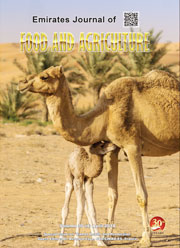SOME LIPID COMPONENTS OF THE CAMEL MILK AND BLOOD IN INTENSIVE FARM INSAUDI ARABIA
DOI:
https://doi.org/10.9755/ejfa.v26i4.17276Keywords:
Camel, Lipid, Milk, Serum, Intensive SystemAbstract
Eight lactating camels in intensive dairy farm were sampled for the determination of some lipid components of milk and serum. The gross composition of camel milk samples was close that was shown in literature. The main milk fatty acids (FA) were represented by long chain FA. The proportion of polyunsaturated FA was 3.4%, of monounsaturated 30.3% and of saturated was 66.4% with a ratio saturated/unsaturated FA of 1.97:1. The total cholesterol was on average 118.5 ± 13.0 mg/L, while vitamin A was 419.9 ± 80.9 IU/L, vitamin E 20.2 ± 1.05 µg/100mL and vitamin C, 26.1 ± 3.5 mg/L. Vitamin D3 was below the detection limit. In serum, four FA were mostly present: C16:0, C18:0, C18:1 n-9 and C18:2 n-6 representing 89.1% of the whole FA. Total cholesterol was on average 130.0 ± 18.7 mg/L. According to global FA status, saturated FAs were 59.1%, monounsaturated 16.2% and polyunsaturated 24.1% with a ratio saturated/unsaturated of 1.5 only. There was no significant correlation between cholesterol content in milk and in blood samples, also between the main FA in milk and blood. Under in-door system, the camel receiving intensive diet did not change significantly the main composition of its milk and serum except low level in vitamins.










 .
. 